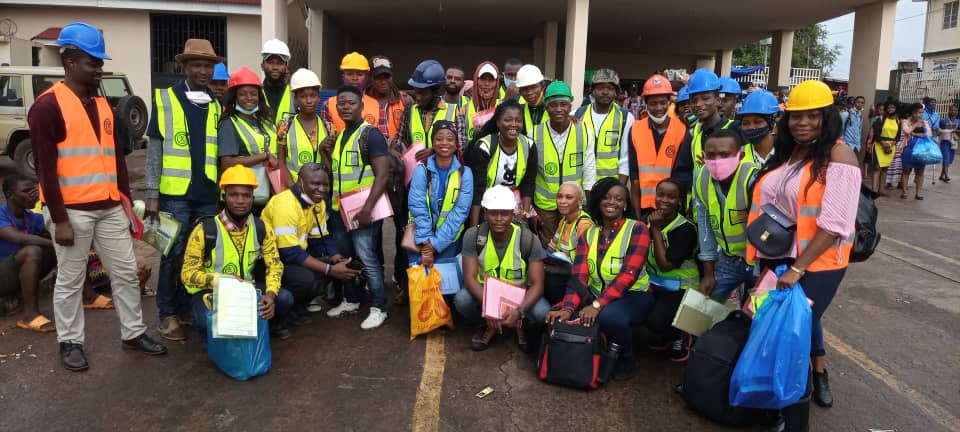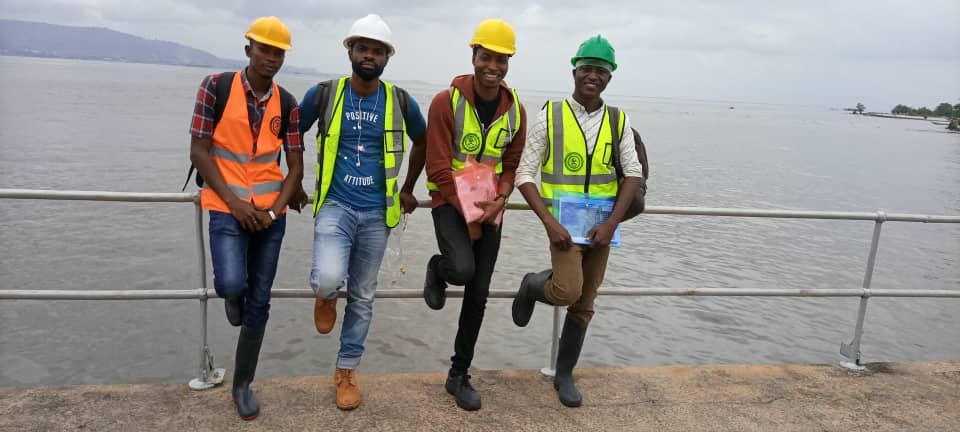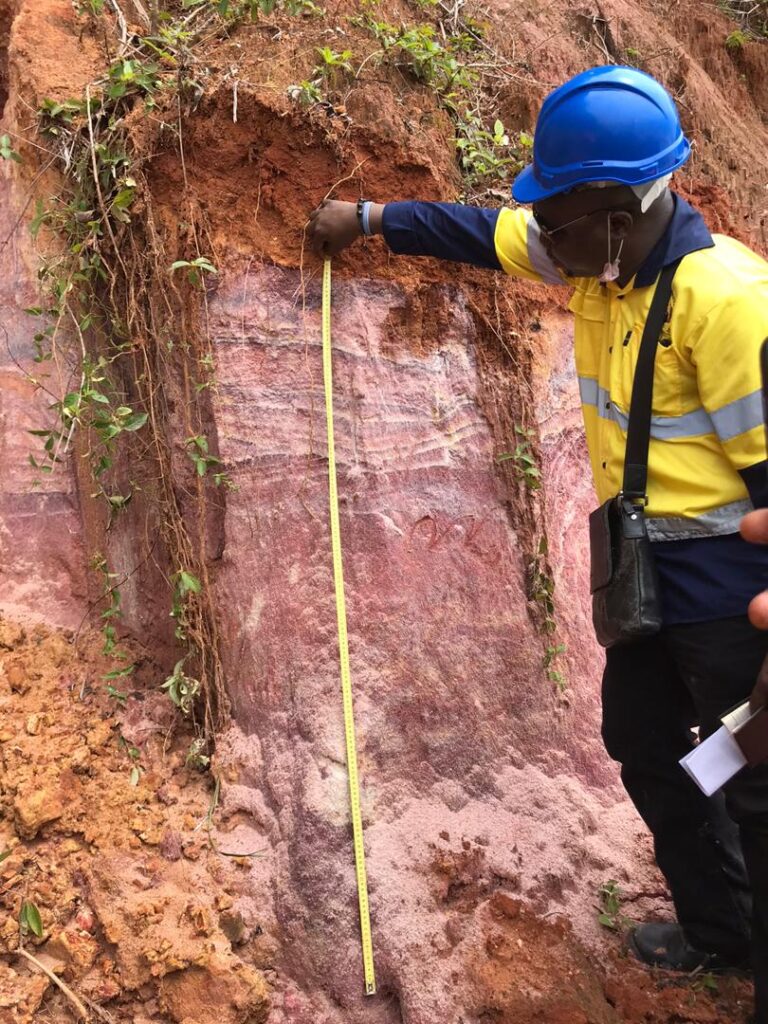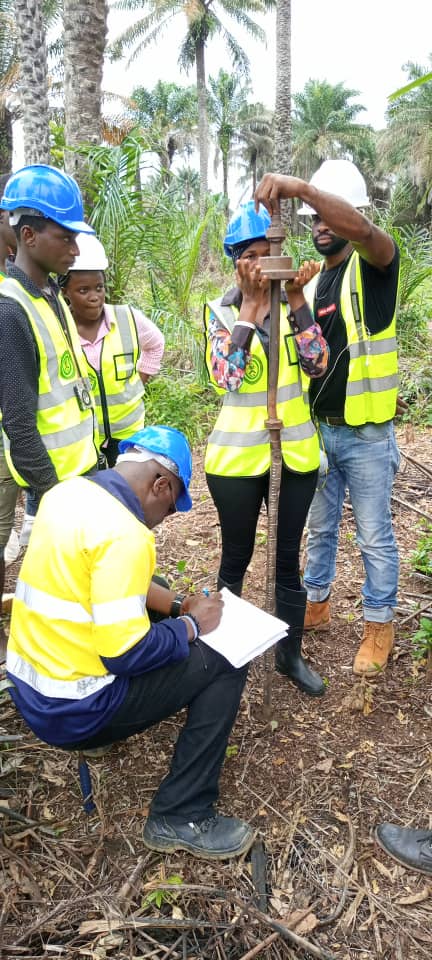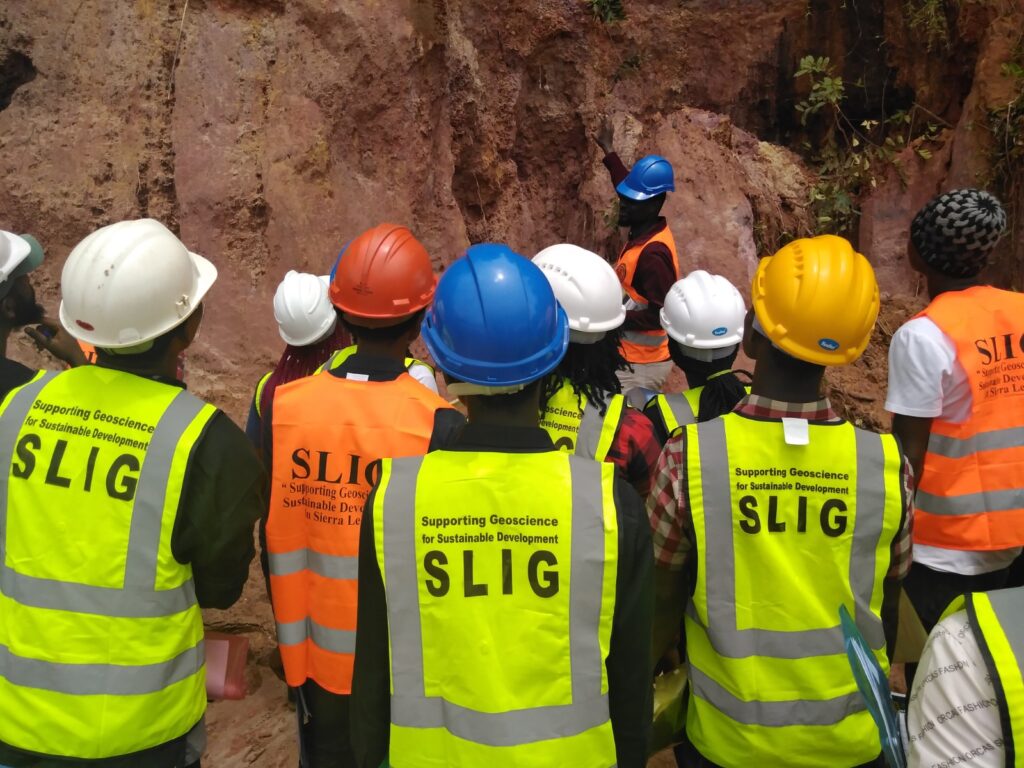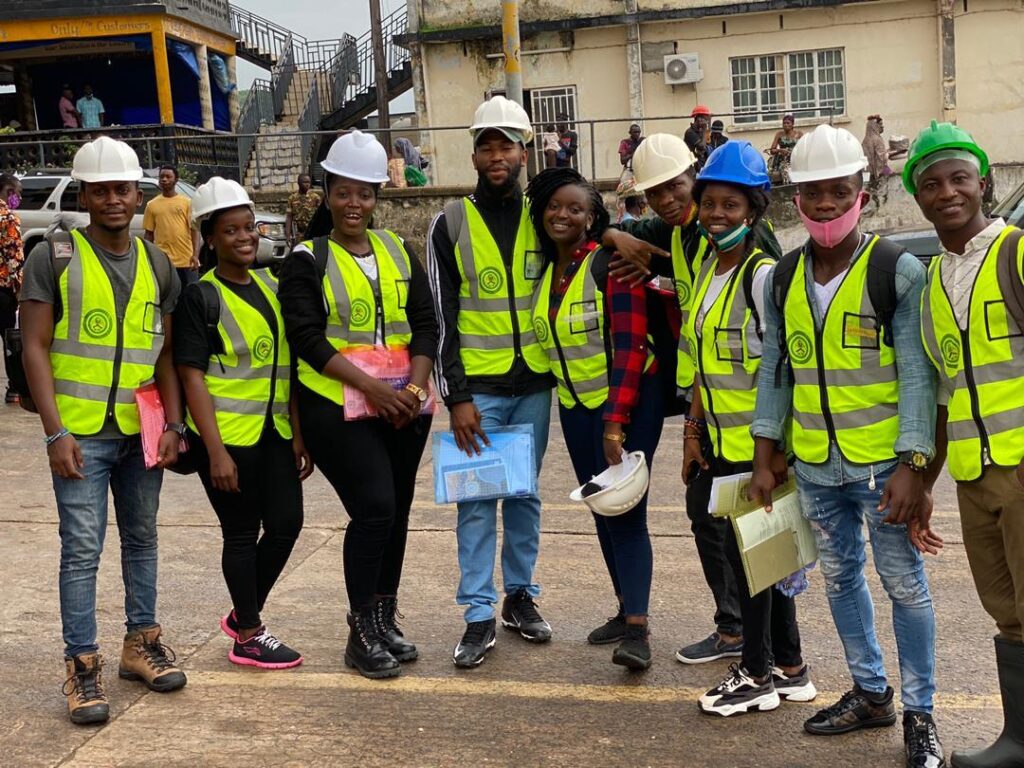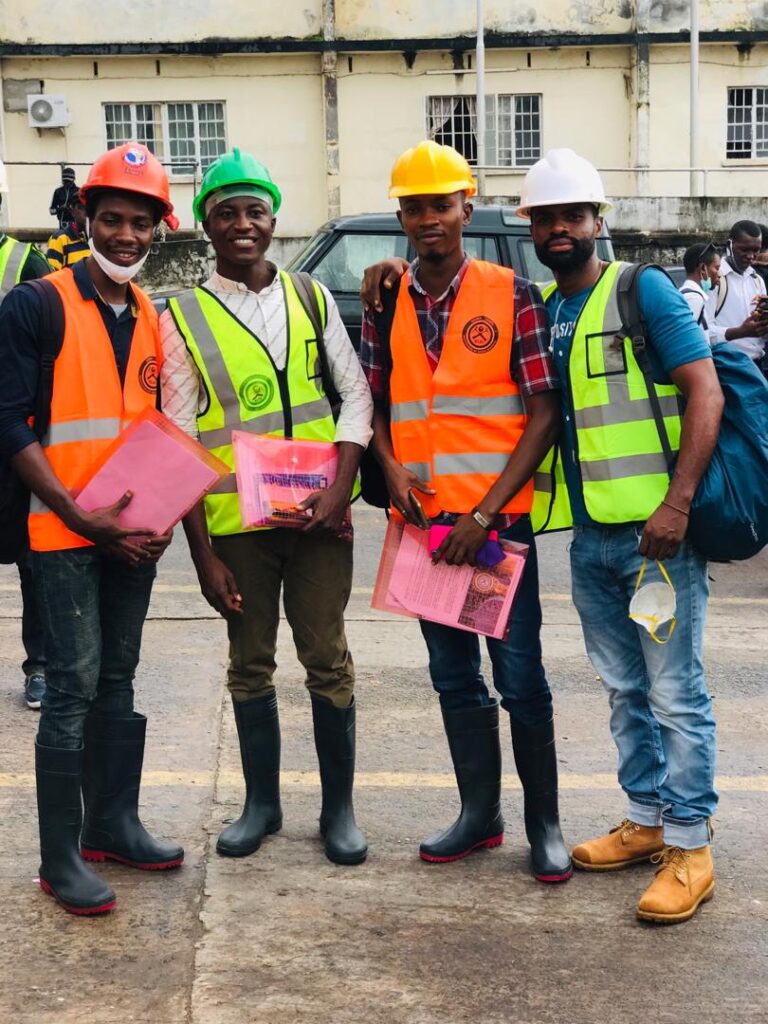This trip was designed to improve our knowledge on the Bullom Group, which is the youngest geological formation of Sierra Leone. For this reason, Conakry-Dee has been carefully selected because of the extensive stratigraphic exposure along its coastal plain (Beach depositional Environment). The coastal plain is occupied by Cenozoic sedimentary deposits that extend up to 50km inland and are found at heights of up to 40m above present sea level. Outcrops are few and far between, but the sea-cliff stretching from Conakry-Dee to Mayaia village along the Bullom Shores attains a height of 25m and provide a classic section of what looks like poorly consolidated sediments, locally referred to as the Bullom Group.
The lithology consists of slightly dipping, often iron-stained gravels, sands and clays with occasional intraformational laterites and lenticular lignite seams. The sands are mostly angular, generally poorly sorted, and display both horizontal and cross bedding. Various types of clay exist in the Bullom; however, the red, purple and white clays are kaolinitic. Dark-coloured clay, probably of organic origin can be seen at low tide and in boreholes. Fossil fish has given an age for the Bullom corresponding to the Eocene.
